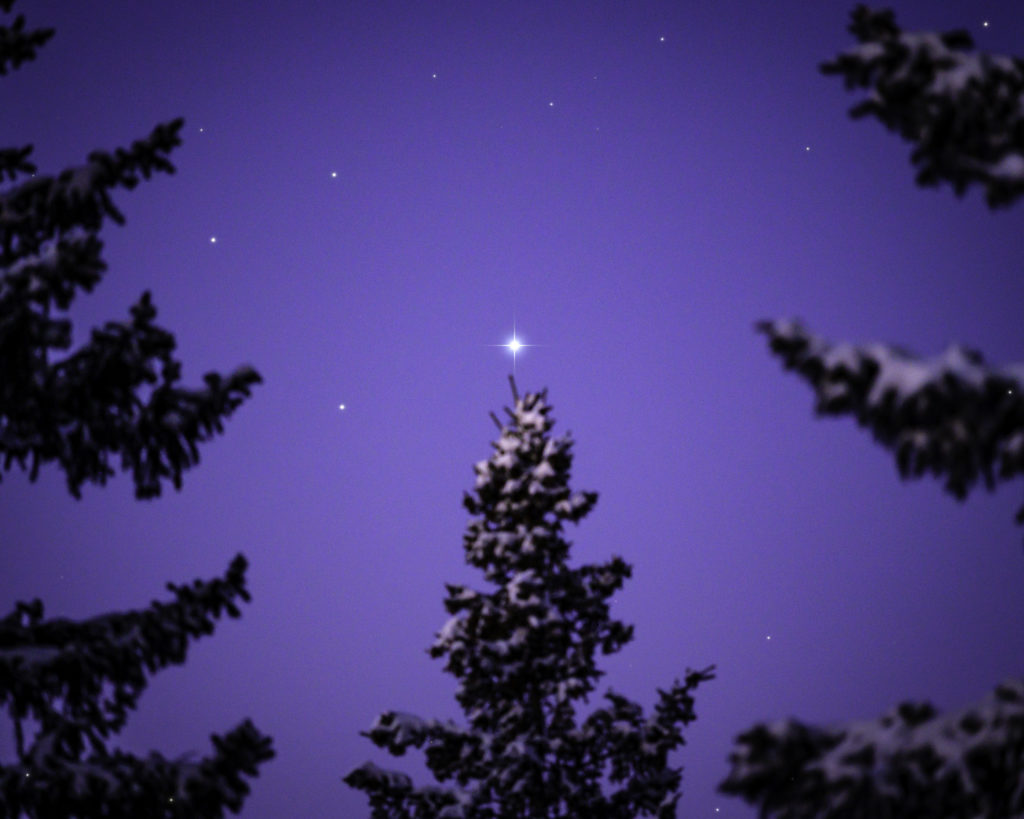
It was another challenging year on Earth. But it was a splendid year for us happy few who like to see what’s going on in the rest of the universe. As 2021 winds down, Jupiter and Saturn linger in the western sky after sunset. Mercury and Venus make a close but low conjunction in the evening sky later in the month. And the Geminid meteor shower enjoys a few hours of darkness in the early morning at mid-month. Here’s what to see in the night sky in December…
2 December 2021. Look for Jupiter, Saturn, and Venus lined up in the southwestern sky after sunset. The three planets remain visible here all month.
3 Dec. Venus reaches its greatest illuminated extent, that is, its greatest apparent size in the sky. It’s only 26% illuminated but its crescent spans about 41”. The planet shines at a dazzling magnitude -4.7 – about as bright as it ever gets – in the southwestern sky in the constellation Sagittarius after the Sun goes down.
4 Dec. New Moon, 07:43UT
4 Dec. If you happen to find yourself in Antarctica today, a total solar eclipse passes across a narrow band from Berkner Island to Shepard Island. Details here…
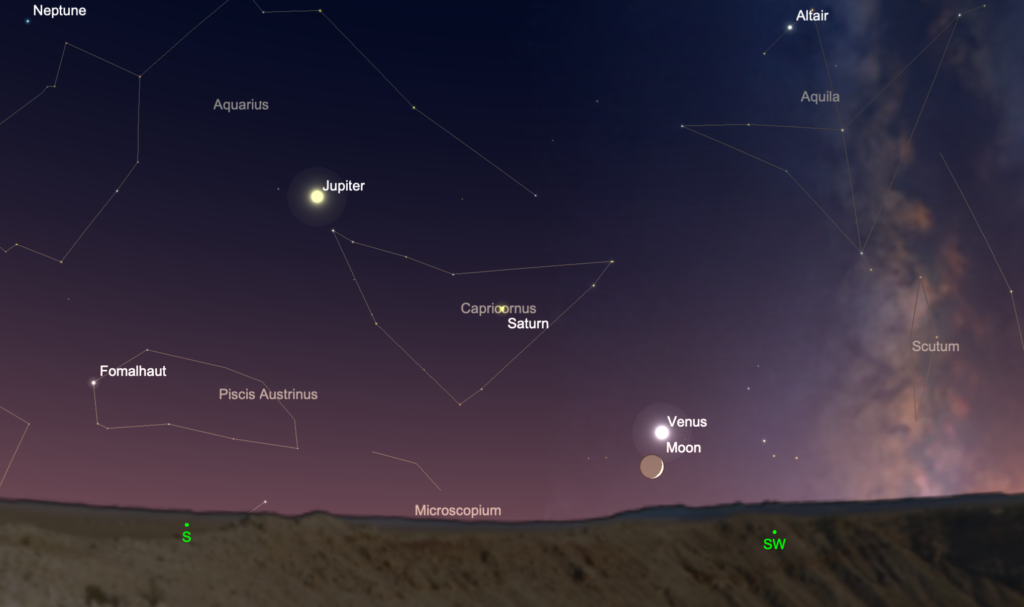
6-8 Dec. Look for the waxing crescent Moon passing Venus, Saturn, then Jupiter on these nights in the southwestern sky after sunset. On the night of Dec. 6th, the Moon is just two degrees from Venus.
11 Dec. First Quarter Moon, 01:36UT
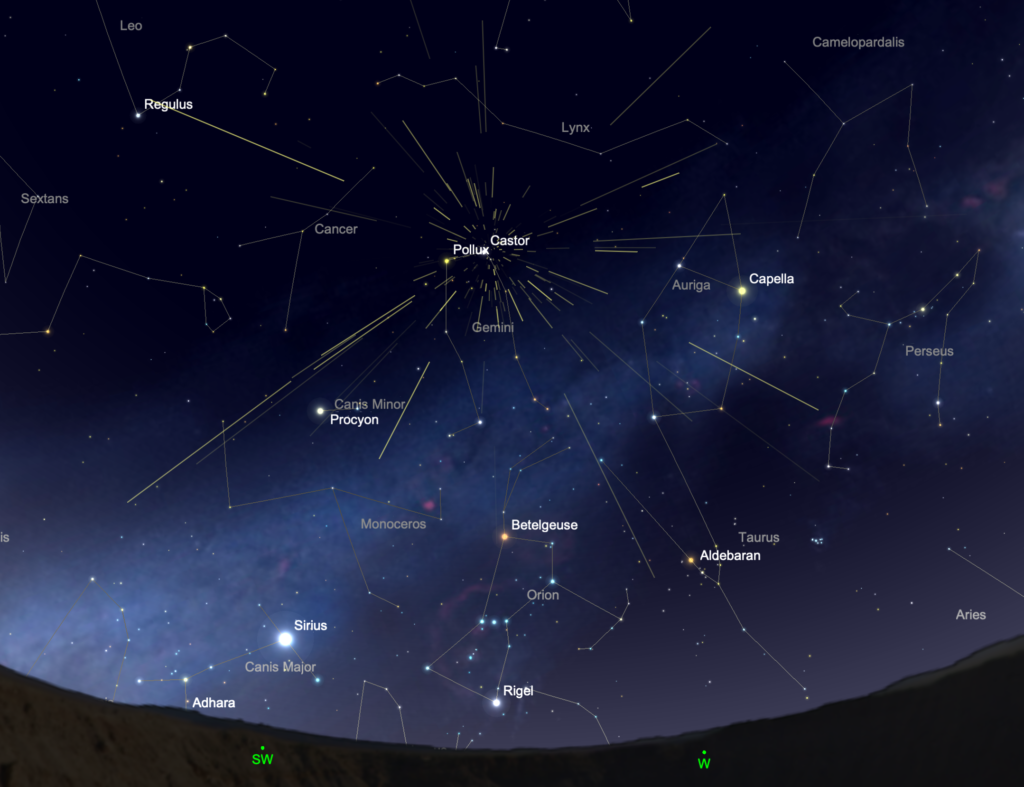
14 Dec. The usually reliable Geminid meteor shower peaks in the late hours of December 13 and into the early morning of the 14th. The waxing gibbous Moon obscures the faintest meteors this year, at least until it sets at about 3:30 a.m. So pre-dawn meteor watching is your best bet. Geminids can appear anywhere in the sky and trace their path back to a point near the star Castor in the constellation Gemini. Also, try looking after dark on the 13th for a few brighter Geminids that may enter the atmosphere at a shallow angle and burn slowly across the sky. The meteor shower happens on this date each year as the Earth passes through a stream of debris from the asteroid 3200 Phaethon, an Apollo asteroid discovered in 1983.
16 Dec. The brilliant gibbous Moon lies between the Hyades and Pleiades star clusters in the constellation Taurus.
19 Dec. Full Moon, 04:35UT
21 Dec. The December solstice arrives at 15:59 UT. This marks the beginning of winter in the northern hemisphere and summer in the south.
27 Dec. Last Quarter Moon, 02:24UT
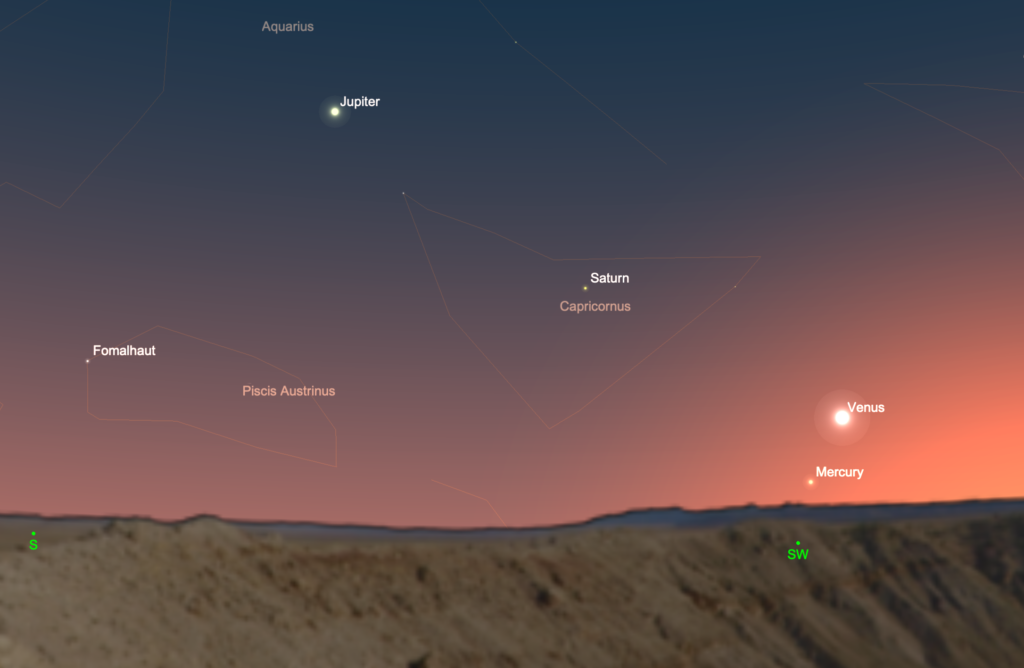
28-29 Dec. The year ends with a conjunction of the two inner planets Mercury and Venus very low in the southwestern sky after sunset. These two hot and rocky worlds fit nicely in a binocular field of view, but you will need a clear view of the southwestern horizon to spot them. Jupiter and Saturn, both well past opposition, lie to the upper left. Mercury shines at magnitude -0.7 about four degrees south of Venus which shines about thirty times brighter at magnitude -4.4. Over the coming days, Mercury moves a little higher as Venus drops quickly towards the Sun on its way to inferior conjunction early next month. For most of 2022, it will appear as the “Morning Star”.
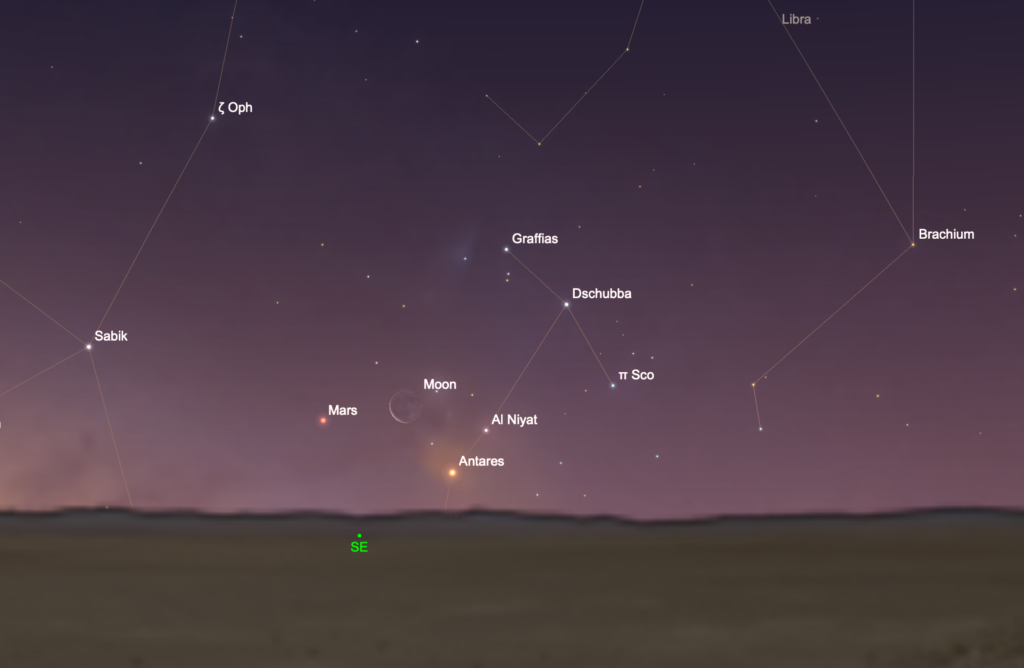
31 Dec. In the early morning twilight, look to the southeastern sky to see Mars, a slender waning crescent Moon, and the star Antares rise before the Sun. The Moon lies between Mars and Antares which are about five degrees apart. A view of the southeastern horizon and a pair of binoculars is all but essential to spot this conjunction. Note the similarity in color between planet and star. The name Antares is a nod to Mars, a planet which the ancient Greeks called Ares. Ant-Ares means “opposed” or “against” Mars. Presumably, this served as a reminder that the star, despite its resemblance, is “not Mars”. Mars shines about half as bright as the star during this conjunction.